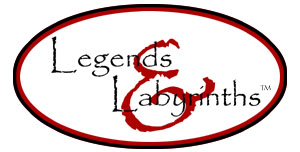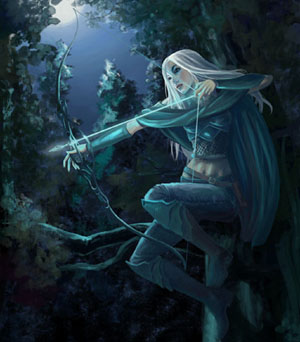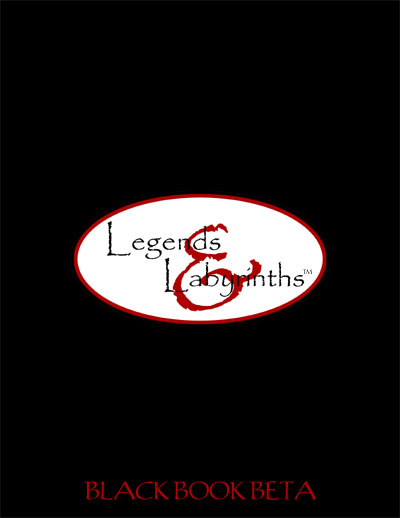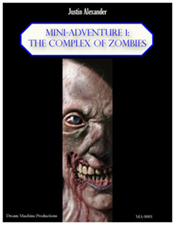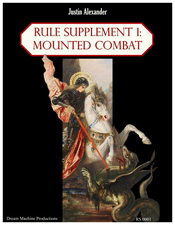A couple day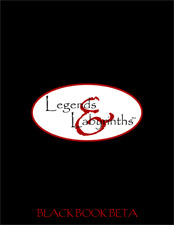 s ago, Baquies said he was on the fence and would like to see what the polymorph spell from Legends & Labyrinths to see if I was truly going in a direction he was interested in.
s ago, Baquies said he was on the fence and would like to see what the polymorph spell from Legends & Labyrinths to see if I was truly going in a direction he was interested in.
In the immortal words of the Dread Pirate Roberts: As you wish…
POLYMORPH
Polymorph
Sorcerer/Wizard 4
Casting Time: 1 standard action
Range: Touch
Duration: 1 minute/level
Target: Willing creature
Saving Throw: None
Spell Resistance: No
The target of the spell can take the shape of any creature (as specified by the caster at the time of the casting). During the transformation, the target’s equipment can either be left behind, worn by the new form (if physically possible), or melded into the new form (in which case it becomes nonfunctional until the polymorph ends).
The physical duplication of the creature-type is flawless to any observation of the five senses. If the spell is used to duplicate the form of a specific individual, it grants a +10 bonus to the target’s Disguise check. The spell does not, however, change any of the target’s stats except size, reach, and speed (including alternative modes of movement). (The target may look like a dragon, but they cannot breathe fire. They may bear the appearance of an ogre, but they do not possess an ogre’s strength.)
Playtest Tip – Polymorph: The polymorphic matrix can be used to disguise appropriate magical effects. For example, a sorcerer casting cone of cold while polymorphed into a white dragon could use the spell effect to make it appear as if he were using a white dragon’s breath weapon.
DESIGN NOTES
Let me start by saying that this is not, necessarily, a great example of what spells will look like in Legends & Labyrinths. Not because of the degree to which the spell has been simplified (that’s very representative), but because in the case of polymorph that simplification is also quietly hiding errata.
Basically, polymorph was a busted spell in 3rd Edition because the designers said, “The spell physically turns you into a creature. Ergo, any abilities based purely on the physicality of that creature should transfer over.” But that’s basically giving a 4th-level spell the ability to do anything that somebody designing a monster decides should be labeled “extraordinary” instead of “supernatural”. The fact the spell also gives you an essentially limitless buff to Strength, Dexterity, and Constitution is also obviously problematic.
In simplifying this spell, therefore, I am also simultaneously saying: “Nope. Not going to play that game. It’s a losing proposition.”
In fact, I originally considered not allowing a change in any stat except size. I eventually added reach because it was too weird having a creature with huge arms which for some reason can’t extend them. (I know that puts me on the same slippery slope, but I’m comfortable with it.) Adding the alternative movement modes was largely a “the whole point of polymorphing into a bird is that you can fly away” thing.
Collectively, this seems to give the spell some innate utility that can’t really be abused. In terms of use at the table, this isn’t quite as simple as “boom, you’re a dragon”. But as buffs go, applying the appropriate size modifier to your attack rolls, grapple checks, and AC is pretty straight-forward.
ADVANCED THOUGHTS
Since we’re talking polymorph, however, let me also comment on the other half of the house rules I use for the spell in my home campaign: The polymorphic buff spell.
This is a 3rd level spell. Each time you cast it on a polymorphed creature (including yourself), you can either:
- Grant yourself a total +10 buff to your physical ability scores. (This can be spread out across the ability scores any way you like, but the final score of any ability cannot exceed the maximum value of the creature you’ve turned into.)
- Mimic any one natural attack or extraordinary ability possessed by the creature. (DM reserves the right to veto anything too insane.)
I’ve boosted the duration of polymorph to 10 minutes/level, but the duration of polymorphic buff is 1 round/level. I also allow partial polymorphs. (So, for example, you can use a polymorph spell to give yourself the head of a dire bear and then use polymorph self to strengthen your teeth so that you can deliver a 2d8 + Str damage attack with it.)
And for a home campaign, this basically works. The common sense veto is essential, though, for making it work (since there’s some crazy extraordinary abilities lurking out there).
With the monster creation system of Legends & Labyrinths as a base to work from, though, I’m thinking there may be another way of handling polymorphic buff: Basically, the caster can grant any one (form-appropriate) ability with a power rank determined by their caster level. So, for example, a 5th-level caster could grant an ability that costs up to 6 power ranks (the power ranks granted to a CR 5 creature).
Or maybe it’s half the power ranks. I’m not sure. I’d have to run some math and do some playtesting.
You could probably also toss in giving any polymorphed creature a natural attack equal to the core attack damage of a creature with a CR equal to the caster level (if appropriate to the form).
Anyway, at this point I’m just musing.
CLIMB INTO YOUR LABYRINTH AND FORGE YOUR LEGEND TODAY!

